A Bedfordshire Vicar and his Drinking Companions: The Case of John Bolton (1716)
Luke Holloway
It was around 10pm on a Sunday, maybe 1713 or 1714. A Bedford labourer named John Newman was ordered by his master to take a letter to John Bolton, the vicar of a village called Sharnbrook in the north of the county. On arriving at Bolton’s house, a woman informed Newman that the vicar ‘was not at home but was at an alehouse near the church’. The messenger finally entered the alehouse at midnight, and there he found quite the tableaux: Bolton, drinking ale, ‘in a posture as if he was asleep and two women in company with him’.[1] Being a man of the church apparently did not prevent Bolton from enjoying that sort of Sunday evening entertainment.
The place of clergymen at the alebench is a fascinating but largely neglected subject. In his study of ‘parsons and parishioners’, Donald A. Spaeth noted that lawsuits against the clergy often featured accusations of drunkenness. While sometimes multiple witnesses cited the same incident, however, such allegations were also frequently used to strengthen other complaints against an unpopular parson. For the most part, ‘ill-living clerics were relatively rare’.[2] Other scholars have since expanded the picture, with Beat Kümin highlighting the multiple connections between church and tavern.[3] As James Brown, Tim Wales, and Phil Withington have most recently argued, tales of intoxicated parsons were indeed the talk of resentful parishioners, but they still typically had ‘some basis in the truth’. After all, ‘a great deal of clerical misbehaviour was rooted in daily social interactions’.[4]
This post revolves around a series of thirty-one depositions, found in the Archdeaconry of Bedford’s court papers at the Bedfordshire Archives. Taken mostly in June 1716, the statements fed into a case against Bolton for ‘neglect of duties’.[5] Given their nature as third-person narratives, transcribed and arranged by lawyers with their own interests, depositions are definitely not unproblematic sources. Yet, whether Newman really did find Bolton in the manner he deposed, for example, is in some ways beside the point. Of more interest here is how Bolton’s contemporaries represented and interpreted such an engagement with drinking culture as acceptable or unacceptable for a parson.[6]
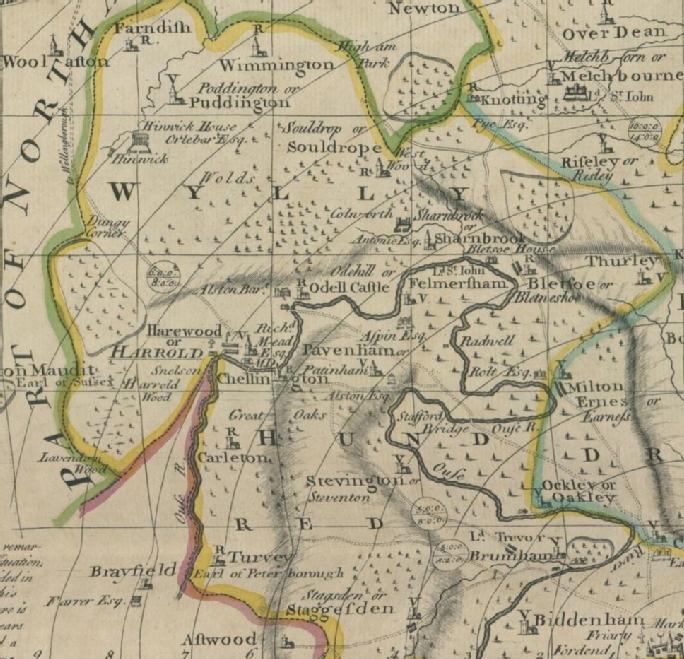
Fig. 1: A map of north-west Bedfordshire, including Sharnbrook to the east and Harrold to the west.
Emanuel Bowen, An Accurate Map of the County of Bedford, 1749, engraving, 66.6 × 49.6 cm <http://explore.bl.uk/BLVU1:LSCOP-ALL:BLL01004801250> [accessed 19 July 2022]
John Bolton (1661–1739/40) was the vicar of Sharnbrook from 1706 until his death, as well as the vicar of Harrold, a village nearly four miles away, from 1710 until the mid-1730s (Figs. 1 and 2).[7] A lacemaker named Alexander Paten heard that, when Bolton first arrived in Harrold, a note was attached to the church’s north door, written ‘out of spight to expose’ him.[8] The carpenter Richard Wootton also understood at the time that Bolton was known as ‘an hard drinker’, but he had since found the vicar ‘a regular sober orderly man’.[9] Indeed, many depositions classified Bolton with the adjectives ‘sober’ and ‘orderly’, not to mention ‘civil’ and ‘kind’.
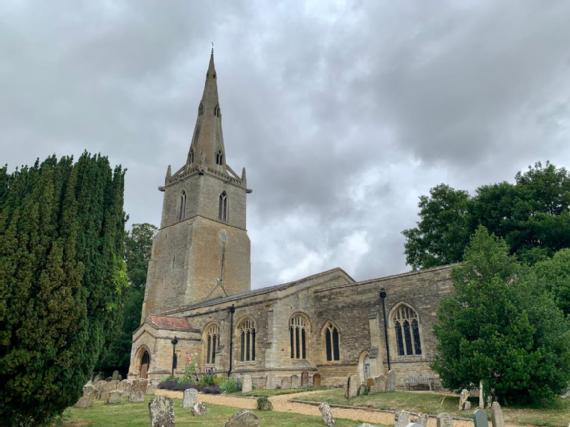
Fig. 2: St Peter’s Church in Sharnbrook, Bedfordshire. Photo taken by the author.
When the witnesses referred to Bolton’s drinking, they cited rumours more than first-hand experiences. Spaeth observes that clergymen often drank in private, meaning that allegations of misbehaviour usually mentioned the effects of excess consumption, such as falling from a horse.[10] Bolton did just that in 1715, when riding through Bletsoe, and he was taken to recover at the village’s Castle Inn. The innkeeper assured locals that the vicar ‘was not then in drink’, but it certainly did not help Bolton’s reputation.[11] There were echoes of his fall in an incident nearby in 1729. In his diary, Benjamin Rogers, another local clergyman, noted rumours that Vere John Alston, the rector of Odell, had fallen from his horse outside the Fox Inn at Chellington. Alston had not been drinking there though; he had instead enjoyed ‘2 Bottles of Wine’ at a friend’s house elsewhere.[12] For both Bolton in 1715 and Alston in 1729, it was the prospect of public intoxication that could particularly damage a parson’s image.
Some deponents mentioned seeing Bolton drink in respectable company. When the labourer John Bodington was lodging at the Bell alehouse in Felmersham, a parish adjacent to Sharnbrook, he noticed that Bolton ‘sometimes came to read the news’ – an intriguing reference to the provision of newspapers at rural drinking houses. Although Bolton was seldom ‘disguised by drinking’ there, one exception was on a Sunday around St Luke’s Day in 1714, when Bolton indulged with various local elites, including a major named John Aspin (Fig. 3). Apparently, Bolton drank so much that he had to rest there overnight.[13] This habit of drinking in elite circles was corroborated by the deposition of Mary Robinson, a former tenant in Aspin’s household. On a few Sunday nights, Robinson saw Bolton go ‘reeling thro’ the kitching [sic]’ when ‘concerned in beer’, even if he ‘did otherwise behave himselfe civilly’ (Fig. 4).[14]

Fig. 3: John Aspin and his wife Ann owned a local estate named Sharnbrook House, and her ‘Ann Aspin’ gates
(note the ‘AA’ in the centre) survive in the churchyard today. Photo taken by the author, with context provided
by James Collett-White and Colin Scott, St. Peter’s Church Sharnbrook: A History and Guide, 2nd edn
(Sharnbrook: Sharnbrook Local History Group, 2011), pp. 46–47.
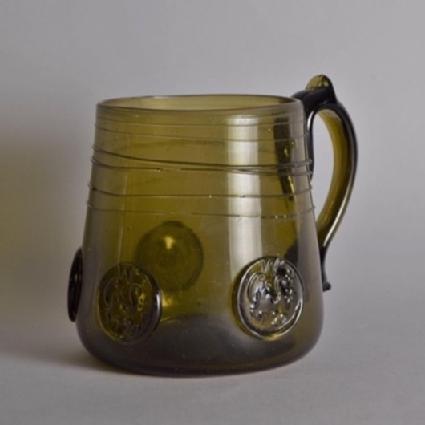
Fig. 4: A glass tankard from Bedfordshire, c.1720 – too fragile for regular use at alehouses, but
perhaps the sort of vessel used by Bolton in elite domestic settings. ‘Mug’ <https://collections.vam.ac.uk/item/O5311/mug-unknown/> [accessed 23 July 2022].
© Victoria and Albert Museum, London.
In November 1715, Bolton supervised brewing activities at the house of John Thurloe Brace in Astwood, Buckinghamshire. Brace was not just a gentleman; he was elected as an MP for Bedford that year.[15] Bolton was with Brace for nearly a fortnight, and while he occasionally returned to Sharnbrook, there was much suspicion back home. Through a messenger from Astwood, a few parishioners heard their parson wore ‘a brewers apron’, rather than delivering prayers on the morning of 5 November.[16] The labourer Christopher Lee – who was with Bolton at Astwood – testified that the vicar instructed him in ‘what quantity of beer must be made’ in the brewhouse. Yet, Lee insisted, Bolton only ever ‘wore his usual rideing habitt’, and he left for Bedfordshire on 5 November before midday.[17] Bolton’s expertise is not too surprising, considering both that brewing was not uncommon in early modern households and that parsons had their own glebe to farm produce. The vicar evidently used drinking and brewing to ingratiate himself amongst the local elite, probably helped by the fact that Bolton, Aspin, and Brace all shared Whig loyalties.[18]
Bolton was not only found in elite company. He spent several years litigating against a wealthy physician who refused to pay his tithes, so sometimes he needed to rally witnesses to his defence. On Sunday 28 February 1713/14, Bolton dined at an alehouse in Little Brickhill, Buckinghamshire. From there, he sent a messenger for an elderly shepherd named John Dennis, who he hoped would testify for him at the assizes in Bedford. When Dennis refused to see him, Bolton went to his house in nearby Bow Brickhill and invited him and his daughters to the Leather Bottle alehouse (Fig. 5). The drinking session that followed became a matter of controversy. Dennis exited the alehouse early, apparently because ‘he went out of doors to make water and could not find his way in again’.[19] This left Bolton drinking with Dennis’ daughters until late at night, and as it turned out, Mary Dennis was known locally for ‘lewd’ behaviour. Yet the landlord and landlady deposed that Bolton never acted ‘indecently or disorderly’: he was unaware of Mary’s reputation, he did not ‘press the drinking of ale’, and he even paid the total bill of 6s 8d.[20] Back in Bedfordshire, though, the local gossip was that Bolton coerced others into drinking and caroused with disreputable women.
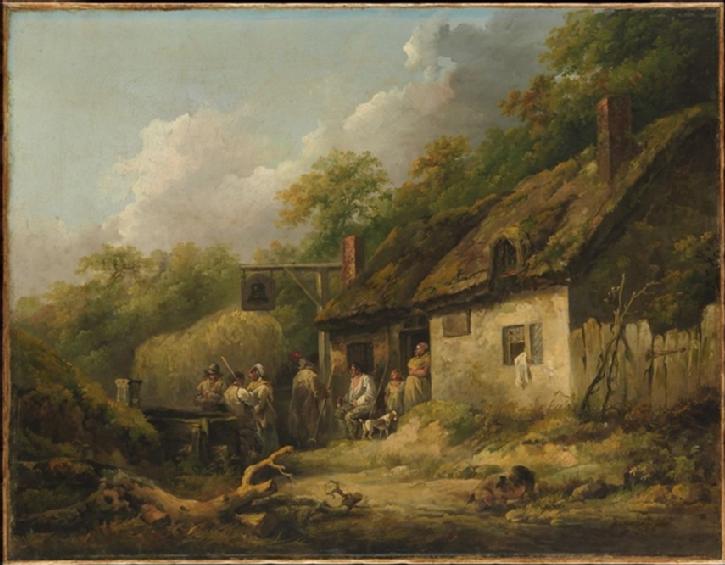
Fig. 5: These accounts of ‘company’ in English villages, such as Bow Brickhill, evoke the depictions of
country inns and alehouses later in the eighteenth century. George Morland, The Bell Inn, late 1780s,
oil on canvas, 52.1 × 66.7 cm <https://www.metmuseum.org/art/collection/search/437161> [accessed 24 July 2022].
A similar concern informed Bolton’s connections to a woman named Ruth Parrott. This brings us back to where the post began: John Newman entering the alehouse in Sharnbrook. The two women with Bolton were supposedly the landlady and Parrott, who, Bolton explained, he had summoned from Northamptonshire as a witness for a trial in London. The apothecary John Wheatly characterised Parrott as ‘scandalous’, while the victualler John Neale heard she had ‘been in Bridewell [the infamous prison in the capital] for endeavouring to break into an house’.[21] Brown, Wales, and Withington stress the serious implications of such tales, and this is perhaps most relevant in Bolton’s links to Dennis and Parrott. While the sources hardly mention Bolton’s wife, Catherine, or their children, one can imagine how such rumours of drunkenness and debauchery might have blighted their domestic life.
Bolton’s drinking was not wholly scandalous or divisive, though. As a Felmersham labourer named Thomas Sheene testified: ‘at one time or other most of the inhabitants of Felmersham have been in company with the said Mr Bolton’, yet the vicar always behaved himself, and his visits to alehouses were based on ‘his lawfull business calling him thither’.[22] In all likelihood, Bolton had tippled with many of his parishioners in Sharnbrook and Harrold too. Such activities reflected the broader struggle faced by clergymen of all periods, locations, and confessions: striking an acceptable balance between professional responsibilities, pastoral care, and neighbourly sociability. Clearly the tension between duty and conviviality was alive and well for ministers in eighteenth-century Bedfordshire (Fig. 6).
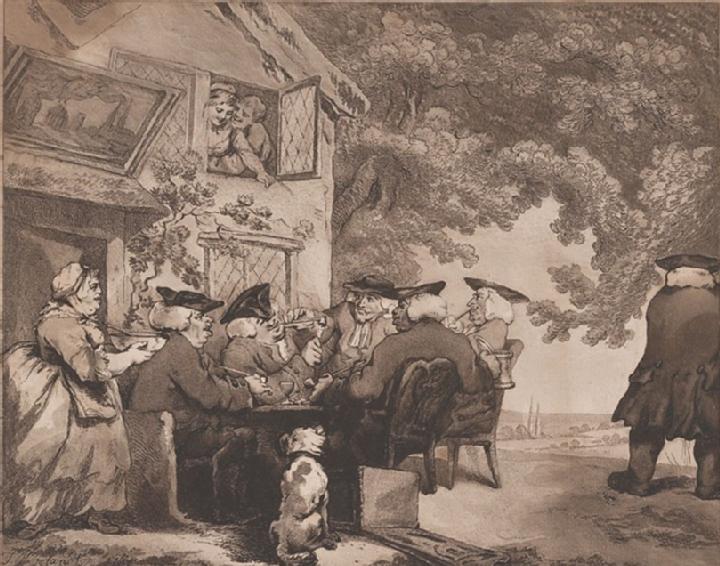
Fig. 6: Although pastoral scenes rarely featured clergymen amidst the conviviality, a few caricaturists did satirise
over-indulgent parsons. (After) Thomas Rowlandson, Francis Jukes, and Peter Simon, Wet Parsons, 1785, etching with aquatint, 28.1 × 33.4 cm, <https://www.metmuseum.org/art/collection/search/735278> [accessed 24 July 2022].
Mark Hailwood has thought of alehouse-goers as ‘good fellows’ who were ‘compartmentalised into smaller “companies” of drinkers’, strengthening the bonds within groups but also cutting them off from others.[23] Bearing Sheene’s comments in mind, however, a clergyman like Bolton interacted with a remarkably broad range of companions. There were certainly lines not to cross – drinking to the detriment of his duties or consorting with suspicious women and social outliers – but on the whole, Bolton’s vocation did little to bar him from the alehouse. Quite the contrary, in fact. Bolton was the shepherd of all in his community, and it was for this reason that he drank with so many of them at the alebench.
ENDNOTES
This research was kindly funded by the Undergraduate Research Support Scheme (URSS) at Warwick. I am very grateful to Beat Kümin for supervising the project, as well as James Collett-White for introducing me to the local context and sources available.
[1] Bedford, Bedfordshire Archives (hereafter BA), ABCP110/1-145, ‘Neglect of Duties: Office Promoted by John Willimott v. John Bolton, Vicar’, p. 77.
[2] Donald A. Spaeth, The Church in an Age of Danger: Parsons and Parishioners, 1660–1740 (Cambridge: Cambridge University Press, 2000), pp. 122–32.
[3] Beat Kümin, ‘Sacred Church and Worldly Tavern: Reassessing an Early Modern Divide’, in Sacred Space in Early Modern Europe, ed. by Will Coster and Andrew Spicer (Cambridge: Cambridge University Press, 2005), pp. 17–38.
[4] James Brown, Tim Wales, and Phil Withington, ‘Vicars on the Liquor’, History Extra, 19 March 2017, <https://www.historyextra.com/period/georgian/vicars-on-the-liquor/> [accessed 12 July 2022]. See also James Brown, ‘”Mr Rothwell Was Very Much Disordered With Drink”: The Long History of the Drunk Vicar’, History Matters, 4 July 2016, <http://www.historymatters.group.shef.ac.uk/mr-rothwell-disordered-drink-long-history-drunk-vicar/> [accessed 28 July 2022].
[5] For further information, see the author’s ‘Pastoral Problems: Investigating the Depositions into John Bolton, Vicar of Sharnbrook (1716)’, History in Bedfordshire, forthcoming. Unfortunately, the depositions seem to be the only documents surviving from the case. The Archdeaconry of Bedford’s court books, for instance, are unavailable from 1713 until late 1716; see BA, ABC, ‘Court Books’.
[6] On the reading of depositions, see Frances E. Dolan, True Relations: Reading, Literature, and Evidence in Seventeenth-Century England (Philadelphia: University of Pennsylvania Press, 2013), ch. 4.
[7] The details of Bolton’s livings can be found in the Clergy of the Church of England Database (ID: 86374), <https://theclergydatabase.org.uk/> [accessed 26 July 2022] and A Cambridge Alumni Database (ID: BLTN677J), <https://venn.lib.cam.ac.uk/> [accessed 26 July 2022]. See also Sharnbrook’s parish registers for his birth and death dates.
[8] BA, ABCP110 p. 143.
[9] Ibid., p. 130.
[10] Spaeth, The Church in an Age of Danger, pp. 123, 124.
[11] BA, ABCP110 pp. 117, 118, 50.
[12] The Diary of Benjamin Rogers, Rector of Carlton 1720–71, ed. by C. D. Linnell (Streatley: Bedfordshire Historical Record Society, 1950), pp. 11, 12.
[13] BA, ABCP110 p. 49.
[14] Ibid., p. 97.
[15] R. S. Lea, ‘Brace, John Thurloe (?1685–aft.1735), of Astwood, Bucks.’, in The History of Parliament Online, <https://www.historyofparliamentonline.org/volume/1715-1754/member/brace-john-thurloe-1685-1735> [accessed 19 July 2022].
[16] BA, ABCP110 p. 41.
[17] Ibid., p. 25.
[18] James Collett-White, How Bedfordshire Voted, 1685–1735: The Evidence of Local Poll Books (Woodbridge: Boydell Press, 2006–8), I: 1685–1715 (2006), pp. 213, 217.
[19] BA, ABCP110 pp. 53, 54.
[20] Ibid., pp. 65, 66, 69.
[21] Ibid., pp. 111, 81.
[22] Ibid., p. 85.
[23] Mark Hailwood, Alehouses and Good Fellowship in Early Modern England (Woodbridge: Boydell Press, 2014), p. 181.

Luke Holloway graduated with a History degree from the University of Warwick in July 2022, writing his dissertation on inns in eighteenth-century Bedfordshire. His research interests include religion and society in early modern Britain and Europe, and he has recently co-authored an article on Methodism and the supernatural. He is now embarking on an MPhil in Early Modern History at the University of Cambridge.
